For countless generations, Indigenous healers across North America have cultivated a profound understanding of the land’s medicinal treasures – knowledge that extends far beyond simple plant identification into a holistic approach to wellness that encompasses body, mind, and spirit. These time-honored healing practices, developed through millennia of careful observation and spiritual connection with the natural world, offer valuable insights into sustainable healthcare and our relationship with the environment.
Long before modern medicine, Indigenous healers recognized the therapeutic properties of plants like sweetgrass, sage, and cedar – not just as individual remedies, but as part of an interconnected system of healing that considers the whole person and their connection to the natural world. Today, as more people seek alternatives to conventional medicine and yearn to reconnect with traditional wisdom, these ancient healing arts are gaining renewed appreciation and respect.
However, it’s crucial to understand that Indigenous healing knowledge is sacred, passed down through generations with careful stewardship. Learning about these practices requires deep respect, proper cultural context, and guidance from Indigenous knowledge keepers who choose to share their wisdom. Through this lens of respect and understanding, we can begin to appreciate the profound depth and continuing relevance of Indigenous healing traditions in our modern world.
The Living Connection: Indigenous Medicine in Ontario’s Parks
Sacred Gathering Grounds
Throughout Ontario’s vast wilderness, certain areas hold deep spiritual and medicinal significance for Indigenous peoples. The Petroglyphs Provincial Park near Peterborough, known as “The Teaching Rocks,” features the largest collection of Indigenous rock carvings in North America and surrounds an area rich in traditional healing plants like sage and sweetgrass.
Along the Bruce Peninsula, the ancient cedar forests near Tobermory harbor sacred gathering spots where medicines like cedar and yarrow have been harvested for generations. The Thousand Islands region, particularly around Gananoque, features sheltered coves where communities have long collected aquatic medicines and conducted healing ceremonies.
In Algonquin Provincial Park, several documented medicine trails wind through areas abundant in white pine, birch, and various mushroom species used in traditional healing. However, it’s crucial to note that these locations are protected, and visitors should never harvest plants without proper knowledge and permissions.
Many of these sacred spaces are still actively used by Indigenous communities today, and visitors are encouraged to learn about these sites through guided Indigenous experiences while maintaining respectful distances from ceremonial areas.
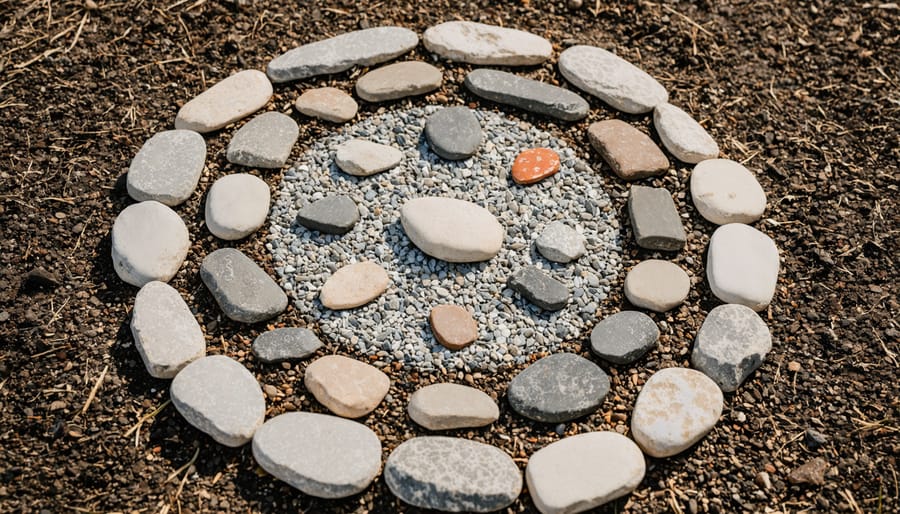
Seasonal Medicine Wheel
In Indigenous healing traditions, nature’s rhythms guide both healing practices and medicine gathering throughout the year. These seasonal Indigenous ceremonies reflect deep connections to the land and its healing gifts. Spring brings forth young plants like dandelion and wild leeks, perfect for cleansing and renewal. Summer offers an abundance of medicinal flowers and berries, while the warm sun helps dry and preserve medicines for future use.
As autumn approaches, root medicines like echinacea and golden seal reach their peak potency, ready for careful harvesting. Winter becomes a time of rest and reflection, when stored medicines are used mindfully, and knowledge is shared through storytelling. Each season also influences how specific remedies are prepared and administered – cooling medicines in summer’s heat, warming ones in winter’s chill.
This cyclical approach to healing reminds us that wellness, like nature itself, flows through different phases. Traditional healers teach that gathering medicines at the right time ensures their greatest healing potential while maintaining nature’s delicate balance.
Essential Healing Plants of Ontario
Forest Medicines
Ontario’s forests are rich with medicinal plants that have been used for generations as part of traditional ecological knowledge. While walking through our woodland trails, you might encounter several healing plants that Indigenous peoples have long recognized for their therapeutic properties.
The distinctive white birch tree, with its papery bark, has been used to make pain-relieving tea and healing salves. Look for the heart-shaped leaves of wild ginger spreading across the forest floor – this plant has traditionally helped ease digestive issues. The vibrant purple coneflower, or echinacea, stands tall in sunny clearings and is well-known for boosting immune system function.
In damper areas, you might spot the distinctive three-leaved goldthread, whose bright yellow roots were once used to treat mouth sores. The sweet-scented wintergreen, with its glossy leaves and bright red berries, can often be found creeping along the forest floor, traditionally used for relieving aches and pains.
Remember to observe these plants respectfully and never harvest without proper knowledge and permission. Many of these medicines require specific preparation methods and should only be used under guidance from knowledge keepers. The best way to learn about these plants is through authorized educational programs that work directly with Indigenous communities.
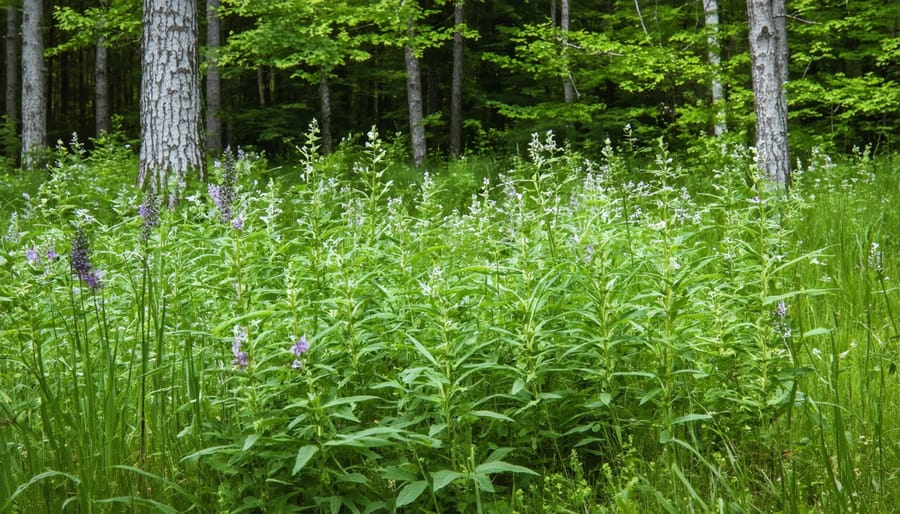
Wetland Remedies
Ontario’s wetlands have long been natural pharmacies for Indigenous healers, offering a diverse array of medicinal plants that thrive in these water-rich environments. Along the edges of marshes and swamps, you’ll find the versatile cattail, whose gel-like substance between young leaves serves as a natural antiseptic for cuts and burns. The sweet flag, or wike, grows in shallow waters and has been traditionally used to ease digestive issues and headaches.
In spring and early summer, watercress clusters dot the clear flowing streams, packed with vitamins and historically used to treat respiratory conditions. The vibrant purple of joe-pye weed stands tall near marsh edges, traditionally brewed into a tea to reduce fevers and boost immunity. Look for the distinctive white flowers of boneset, which Indigenous healers have long employed to treat colds and flu-like symptoms.
One of the most revered wetland medicines is labrador tea, a low-growing shrub found in bog environments. Its aromatic leaves, when steeped, create a soothing beverage that helps with colds and stomach ailments. Remember that these plants are part of a sacred healing tradition – while we can appreciate their presence and learn about their uses, it’s essential to respect these resources and the knowledge systems they represent.
Pro tip: Join guided tours led by Indigenous knowledge keepers to learn about these plants responsibly and understand their cultural significance.
Responsible Learning and Experience
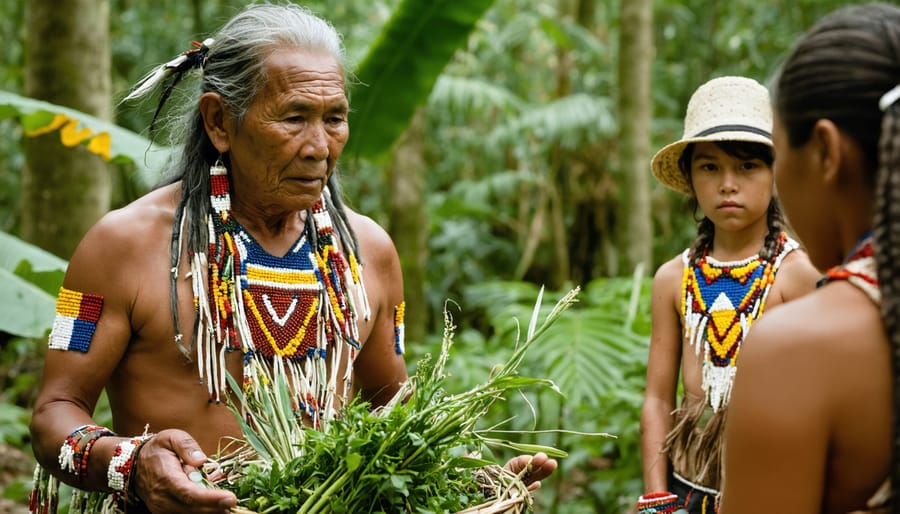
Cultural Programs and Guided Experiences
Several Ontario parks offer authentic, elder-led programs that provide respectful insight into traditional healing practices. At Petroglyphs Provincial Park, the Learning Place hosts seasonal workshops where visitors can discover the significance of sacred medicinal plants while learning about Indigenous oral traditions that have preserved this knowledge for generations.
The Ojibwe Cultural Foundation in Manitoulin Island offers guided medicine walks from June through September, where experienced Indigenous educators share their understanding of local healing plants and traditional gathering practices. These intimate tours are limited to small groups to ensure a meaningful experience and minimize environmental impact.
For a more immersive experience, the Kay-Nah-Chi-Wah-Nung Historical Centre (Manitou Mounds) provides multi-day programs where participants can learn about traditional plant identification, responsible harvesting methods, and basic preparation techniques under elder guidance.
Pro tip: Always book these experiences well in advance, as they often fill up quickly. Remember that these programs are opportunities to listen and learn rather than collect plants. Photography may be restricted during certain ceremonies or at sacred sites, so always ask for permission first. Many locations offer year-round indoor workshops during the off-season, focusing on traditional teachings and the spiritual aspects of healing arts.
Respect and Conservation
When learning about Indigenous healing practices, it’s essential to approach the subject with deep respect and cultural sensitivity. These sacred traditions have been passed down through generations, with preserving Indigenous knowledge being crucial for future generations.
If you’re interested in learning about traditional healing arts, always seek guidance from recognized Indigenous healers and knowledge keepers who choose to share their wisdom. Never attempt to gather or use medicinal plants without proper training and permission. Many sacred plants are at risk due to over-harvesting, and some areas are culturally significant spaces that deserve protection.
Remember that Indigenous healing is not just about plants – it’s a holistic approach encompassing spiritual, emotional, and physical well-being. Support Indigenous-led initiatives and organizations that work to protect these traditions. When visiting natural spaces, follow Indigenous protocols, ask permission when appropriate, and leave areas as you found them. Consider making an offering of tobacco when seeking knowledge, as this shows respect for the teachings and the land that provides these medicines.
As we reflect on the rich traditions of Indigenous healing arts, it’s crucial to approach this knowledge with deep respect and gratitude. These practices, developed over countless generations, represent not just medical treatments but a holistic understanding of wellness that connects people, nature, and spirit.
Supporting Indigenous healing practices starts with recognition and education. Consider visiting Indigenous-operated cultural centers, attending authorized workshops led by knowledge keepers, or participating in guided medicine walks offered by Indigenous communities. These experiences provide authentic learning opportunities while ensuring traditional knowledge is shared appropriately and ethically.
Remember that many sacred medicines and healing practices are protected cultural property. Instead of attempting to replicate these practices independently, focus on supporting Indigenous healers and communities directly. This can include purchasing authentic medicines from Indigenous producers, donating to Indigenous-led health initiatives, or advocating for the protection of traditional medicinal gathering grounds.
For those interested in learning more, seek out Indigenous-authored resources and community-approved educational materials. Many First Nations communities in Ontario offer cultural programs that share aspects of their healing traditions while maintaining appropriate boundaries around sacred knowledge.
By approaching Indigenous healing arts with respect, supporting Indigenous-led initiatives, and advocating for the preservation of traditional practices, we can help ensure these vital traditions continue to thrive for future generations.

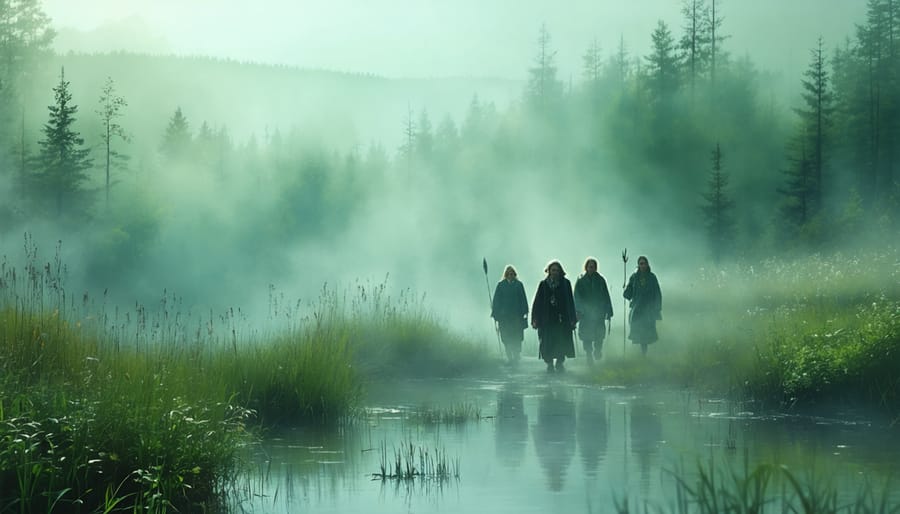
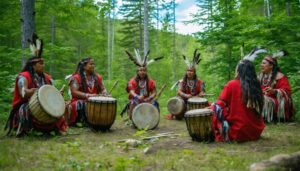
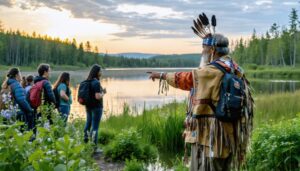
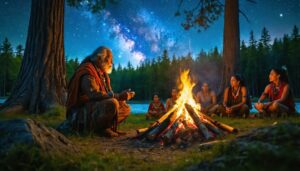

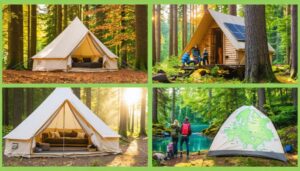

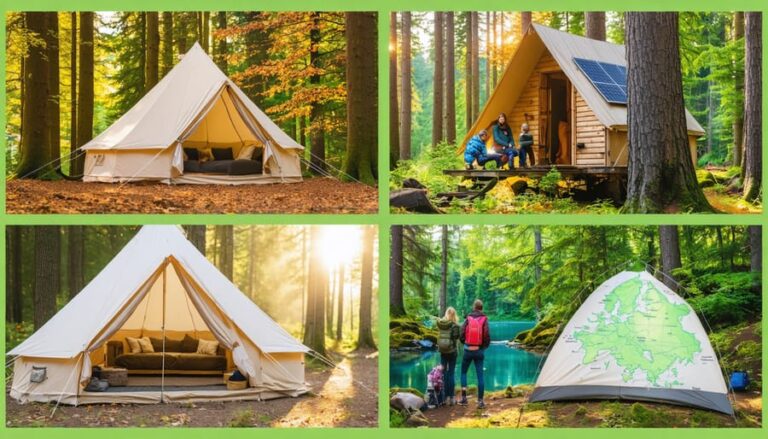
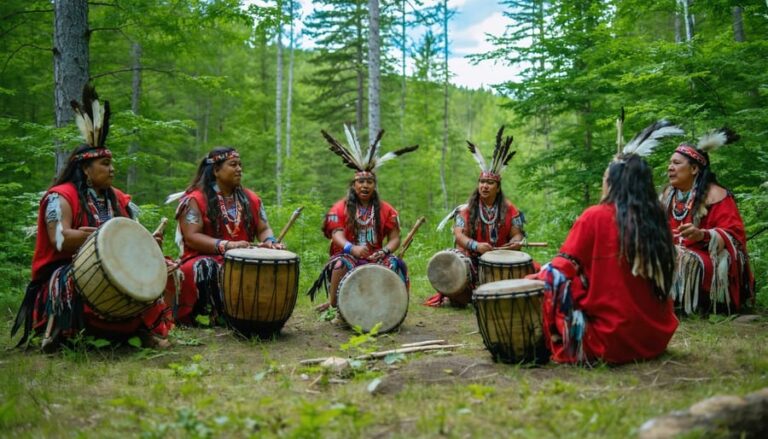
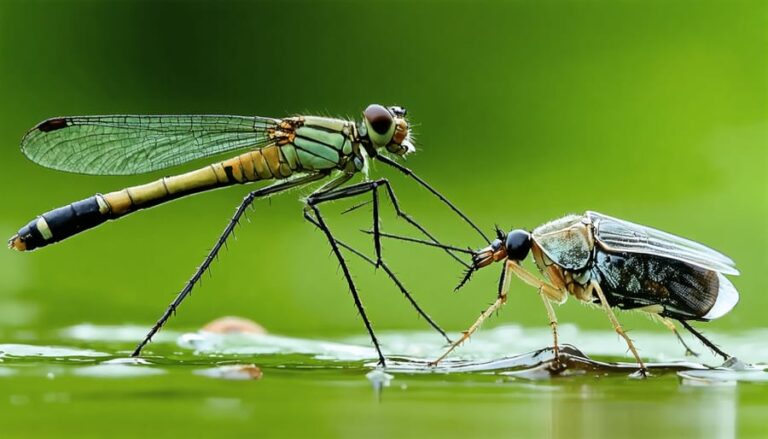

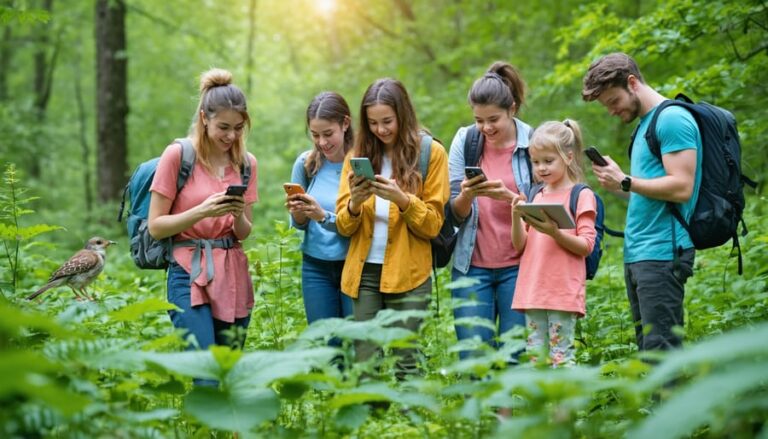
+ There are no comments
Add yours